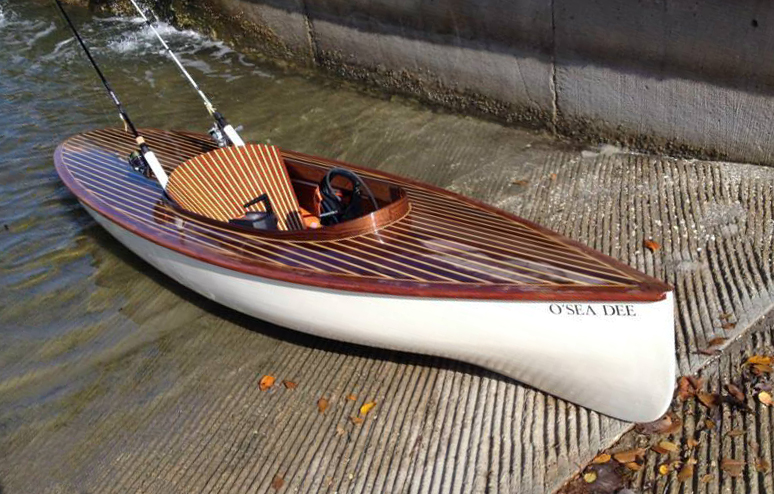 photographs and video by Sandy MacKenzie
photographs and video by Sandy MacKenzieThe deck is strip-built, alternating western red cedar with white pine; the trim is walnut.
Sandy MacKenzie lives in Gananoque, Ontario, just a few blocks from the banks of the St. Lawrence River. He enjoys fishing from kayaks, but putting his fishing rod down to pick up the paddle began to wear on him. He scouted about, without success, for plans for a canoe or a kayak with pedal or electric power that would leave his hands free for fishing. He had built a few kayaks and felt confident in his boatbuilding abilities, so he decided to take a chance on coming up with a design himself, something quite different from anything he’d seen.
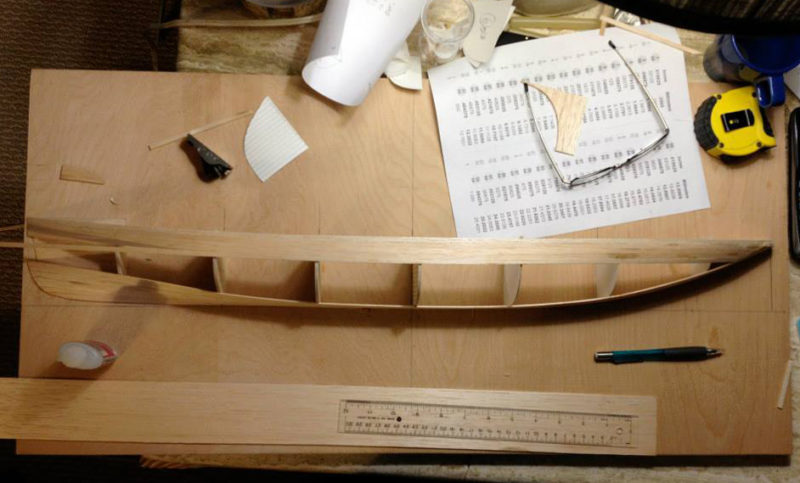
Using balsa-wood strips and working by trial and error, Sandy arrived at the shape of his mini-launch.
He had always admired the lines of fantail launches and embarked on an experiment to create one as the size of a paddling craft, but with the eye appeal of a launch. The overall dimensions were determined by other existing small boats, which assured him that a 10′ 7″ by 2′ 4″ mini-launch would support his weight and the boat’s outfitting. He “sketched” the boat in three dimensions by constructing a 1:8 scale model, planking it with strips of balsa wood and adjusting the shape as he went. Designing with a model is traditionally done by carving a half hull from a block of wood, but that involves a lot of wood chips, which is okay in the shop, but not in the living room where Sandy could work in more comfort. When he had the model shaped to his satisfaction he derived six stations from it, and scaled them up to make the molds on which he’d build the boat.
Unsure if the finished results of his experiment would be worth keeping, Sandy didn’t buy a new batch of cedar strips, but instead used white-cedar strips he’d culled from the stock used for other kayaks he’d built. Like most fantail launches, the hull of this new boat would be painted anyway, and the worst of the knotty subpar strips would be used where they would be hidden from view in the bright-finished interior.
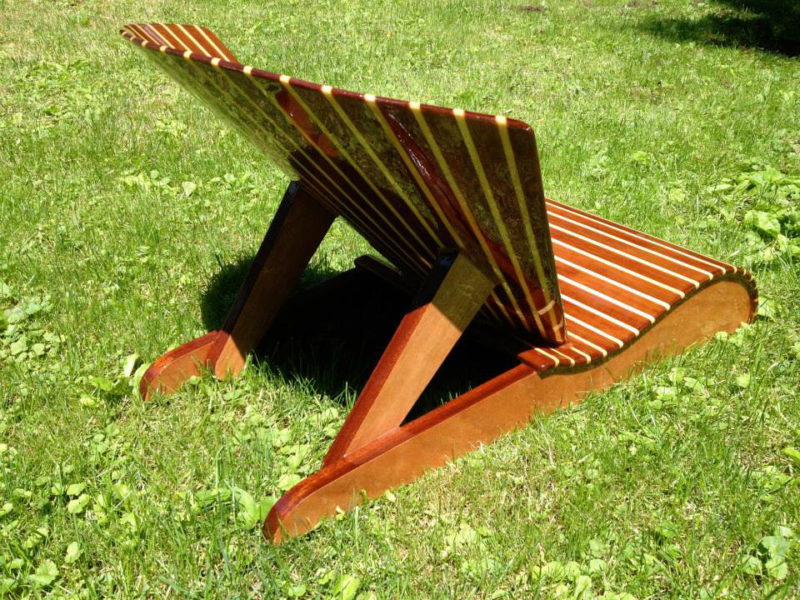
The mini-launch’s seat was inspired by Adirondack chairs.
It took Sandy only two days to strip the hull. Then came a layer of 6-oz fiberglass cloth and a skeg scribed to fit the stern. The seat and backrest, to be finished bright, weren’t so easy to make and consumed countless hours.
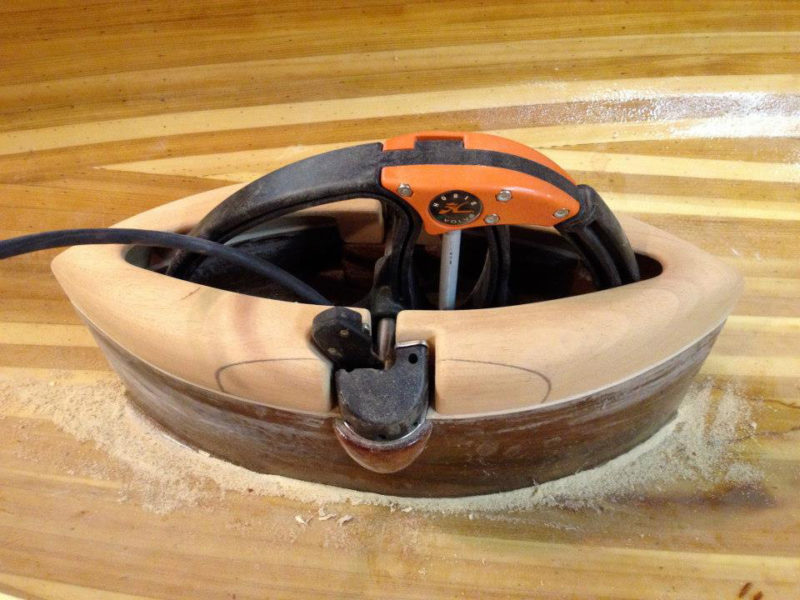
The electric motor fits a well initially intended for a pedal-drive unit. Latches fixed to the well keep the motor locked in place.
Sandy outfitted the hull with a custom “motorwell” to take a Hobie Mirage drive—a pedal-powered device designed for sit-on-top kayaks. Its oscillating pedals power two flexible fins beneath the hull, propelling the boat like penguin wings. Unfortunately, sea trials revealed that the spoon-shaped stern was pulled down when the boat was pedaled up to speed. Moving the seat and the drive-unit receptacle forward might have solved the problem, but there wasn’t enough length in the boat to make that adjustment. Fortunately, Torqeedo makes an electric power unit, the Hobie evolve, designed to fit in receivers for Mirage drives. Sandy could move the seat forward to solve the trim problem and leave the drive mount in the same place.
Sandy christened the boat O’SEA DEE, a nod to the inordinate amount of time and obsessive fussing he had invested in such a small boat. His little launch cruises comfortably at 4 knots and can do 6 at full throttle. The stern still squats at top speed, but not nearly as badly as it did. As for the fishing that O’SEA DEE was designed to accommodate, “trolling with the motor,” he says, “is a dream.” It has a distinct advantage over the pedal drive in that it has reverse, so Sandy has all the maneuverability he needs to pursue fish.
As fall comes to a close, Sandy still takes O’SEA DEE out on the St. Lawrence River exploring the clusters of islands surrounding Gananoque and “jigging for pickerel and small-mouth bass in deep water where there isn’t much boat traffic,” he says. “If I’m not catching anything, I’m thinking about the next design.”![]()
Have you recently launched a boat? Please email us. We’d like to hear about it and share your story with other Small Boats Monthly readers.
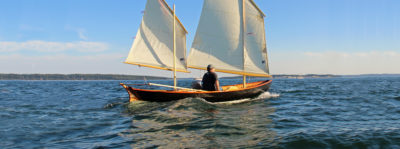
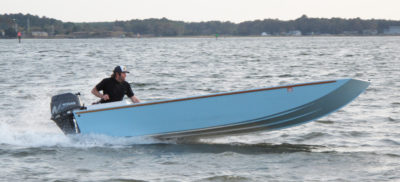
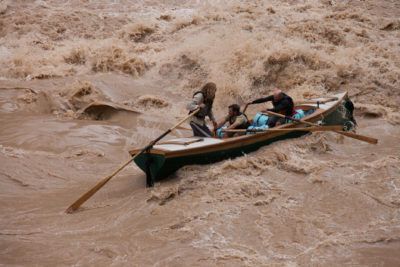
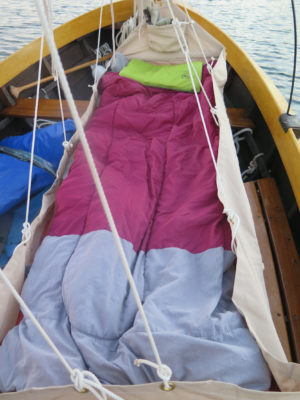
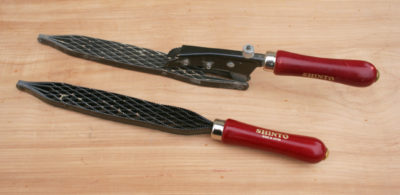
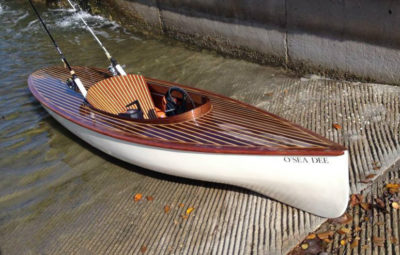
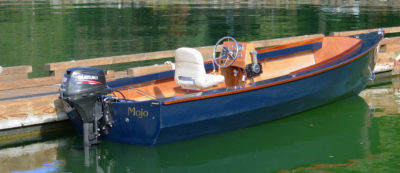
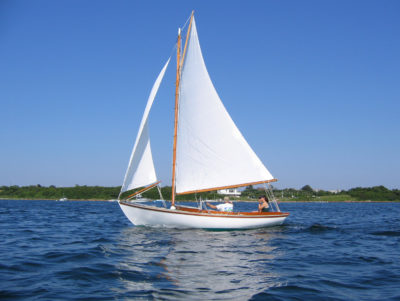
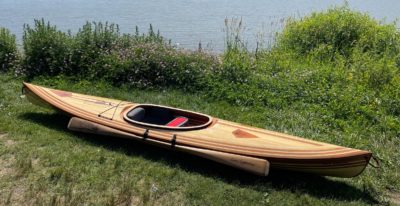
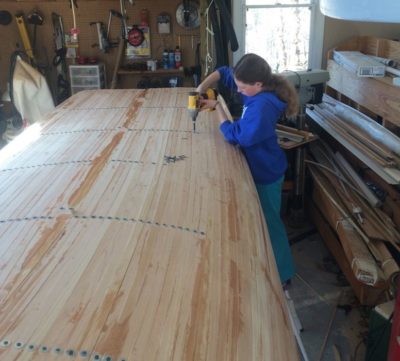
Beautiful craft. Do you have a set of lines for it and are they for sale?
Thanks Vince! Depending on demand, I want to work on a version of this boat that has more weight capacity. This one is a little on the light side, my body weight is all O’SEA DEE will handle ( I average 150 lbs). I want to shoot for 250- to 300-lb capacity. I also want to address a design issue with the hull shape below the waterline, involving the keel. The result will be a more efficient hull design that will be more maneuverable.
Beautiful little boat. The motor looks very interesting, what is it?
The motor is the Hobie evolve, manufactured by Torqeedo and sold as an accessory by Hobie.
Great looking boat. What type of battery do you use to power the electric motor and how long can you cruse at 4 knots?
Thanks John! The battery is a 24-volt lithium pack that comes with the motor. It weighs in at a mere 7 pounds. It can,apparently, provide 8 hours of power if managed properly. At a constant 4 knots, in my boat, I have probably three hours, but that may be conservative. For a test, I went from Wiggins Pass in southwest Florida to Hickory Island Pass through the canals, fighting a strong tide for half the trip, returning via the Gulf to Wiggins Pass. When I returned after being gone for about four hours (I stopped to fish at Hickory Pass), I still had about 25% power left. I believe the whole trip with twists and turns was about 13 miles or more. I actually stayed local for another couple of hours fishing the inlet before returning to the marina with about 15% power, and still no huge drop in power at lower settings. I can be out in this boat all day if my rear end could take the weight for that long! Thanks for your interest.
Very attractive and it does the job! The seat is very nice. What did you use for the light-colored strips between the darker wood? I’m planning a small coffee table for our lake house and I’d like to give it that classic runabout deck look. Thanks!
Thank you, Larry. I used select white-pine strips, with an epoxy/wood flour mix that matched the dark wood so that i didn’t need to worry about gaps in the joints.
How enjoyable! Thanks for sharing. I, too, once built a small wooden kayak for fishing, only to find that my 170 lbs weighed the back end down way too far. I wound up scrapping it. I’m surprised that you didn’t make a “quick-and dirty” test model before putting in all the time to do the beautiful wood work, but it worked for you—even though you have a version two in mind. Please follow up with a new story on your new and improved model. I would very much like to make and use one. My waters are the rivers around Pittsburgh, Pennsylvania, as well as the open waters of Lake Erie. I have fished a 17′ Folbot with attached electric motor. There is nothing like sneaking up on the fish in a kayak,catching a 3’fish that turns the boat around. Great job, and thanks again.
Thanks James. A model would have been a good idea, but I still went for it, thinking I had the sufficient volume (only just as it turned out) and that’s all I needed (Haha). I did test the bare hull on the river before going ahead with the finish work, but yes, despite the fact that it was made of “leftovers,” the hull still took a couple of days to make. I will keep you posted on the next version! Glad there are some stealthy fishermen out there. Thanks for your interest.
Cool boat,beautiful too. I’d love to see a larger version, perhaps weighing about 50 lbs with gear.
Thanks for the comment Fred. Here’s hoping version two will happen soon!
WOW, this is amazing. A wonderful work of art.
If someday you build a tandem and you want a buyer, let me know.